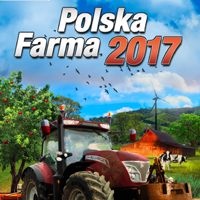Farm Expert 2017: Cereals and grass
Cereals and grasses are one of the simplest, and at the same time the quickest ways of earning money - cultivation of those isn't terribly complicated and requires only a handful of simple rules. First of all, you have to prepare the land the right way - first you need to plow the fields, and then cultivate the land - after these two simple tasks, you can begin seeding.

Both lupine and grass are crops that can be raised for animals - they can substitute artificial fodders and are much cheaper and effective, especially of you've got a lot of livestock. Also remember about the hay generated by harvesting grass - it will also reinforce your budget. However, raising lupine and grass is totally not advisable if you don't have livestock.
In the second group, when it comes down to profit, are wheat and barley - both cost less than 1000 euro per ton, but they don't require as much attention as soy or rape; you will save some on fertilizers and protection agents.
If you're after money, invest in soy and rape - those can yield as much as 2000 euro per ton, though you should also spend some money on protecting your crops from diseases that could destroy your whole output. These are the most profitable, especially in initial stages of the game.
Things are somewhat different with maize. The profit is a bit smaller - around 1400 euro per ton, nevertheless, it can be also used as food for livestock, which allows you to save some cash if you have livestock. Remember, too, that in order to harvest maize, you need special harvesting equipment.
Should I spend money on fertilizers and pesticides? If you're cultivating grass or lupine - there's no point - a field will return a lot of money anyway, and pesticides are much too expensive, considering to the profit. A good idea would be to use pesticides if you raise soy and rape - without those, the output can be even 40% smaller if the season is rainy - that's a lot of money. Also remember to use pesticides only in spring. If you do that in autumn, winter will nullify the effect.

There are three winter cereals (those that can be sown for the season automatically skipped by the game (October - March): wheat, barley, and rape. In the three remaining cases, germination takes place only in summer.
What's more, there is a good way of improving a field's productiveness, i.e. sowing the same field twice during one year. You just have to sow winter cereals in September, and harvest them at the beginning of June. If you manage to do this in time, you'll be able to harvest again in mid-September. This allows you to harvest twice a year, though it also reduces soil fertility quickly, which renders further harvests smaller.
Another element of raising grain is selling bales - in this case, keep the output in a magazine, since the profit isn't too big, and if you have livestock, having food produced by you can save a lot of money.
You are not permitted to copy any image, text or info from this page. This site is not associated with and/or endorsed by the developers and the publishers. All logos and images are copyrighted by their respective owners.
Copyright © 2000 - 2025 Webedia Polska SA for gamepressure.com, unofficial game guides, walkthroughs, secrets, game tips, maps & strategies for top games.
